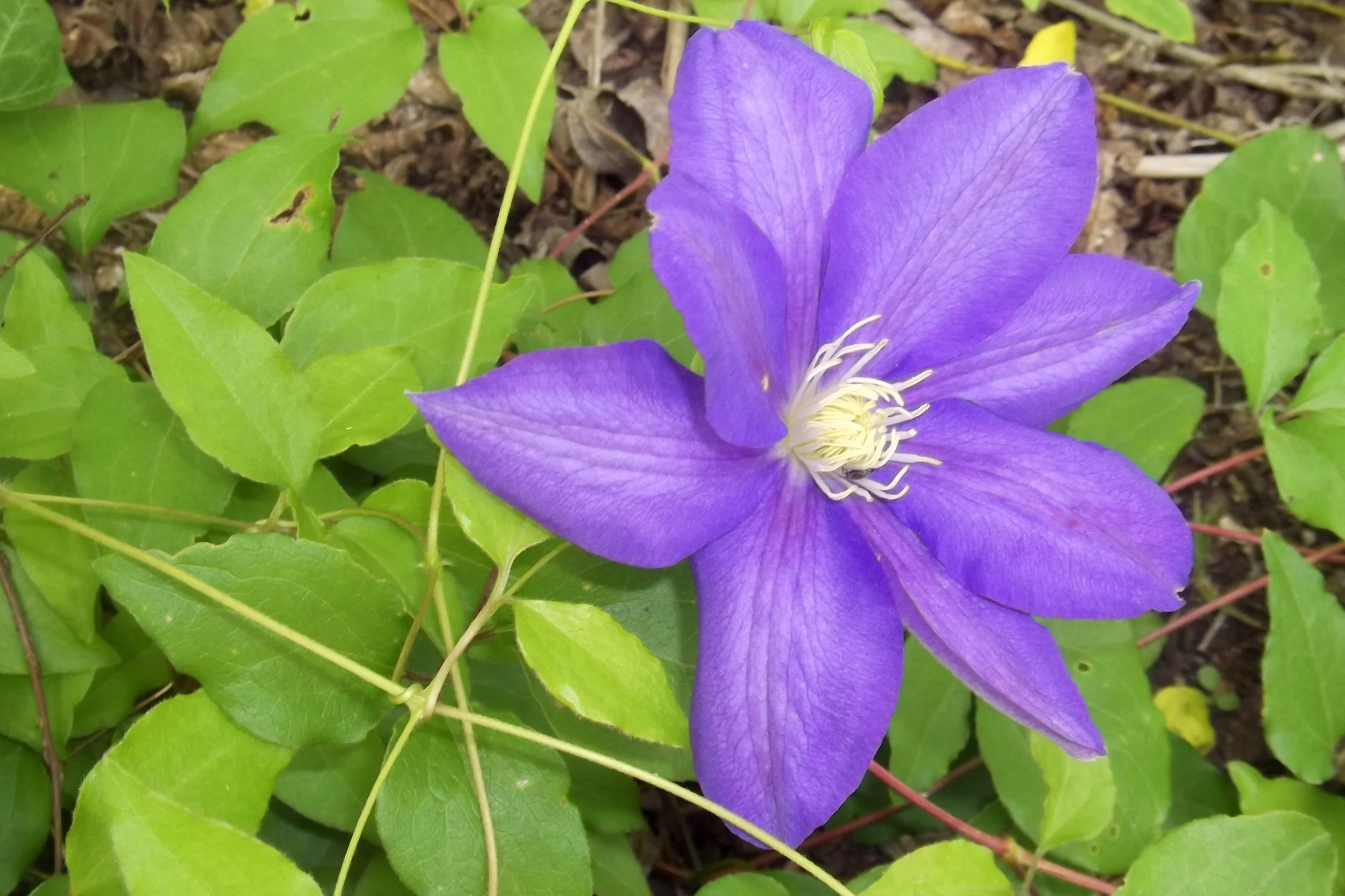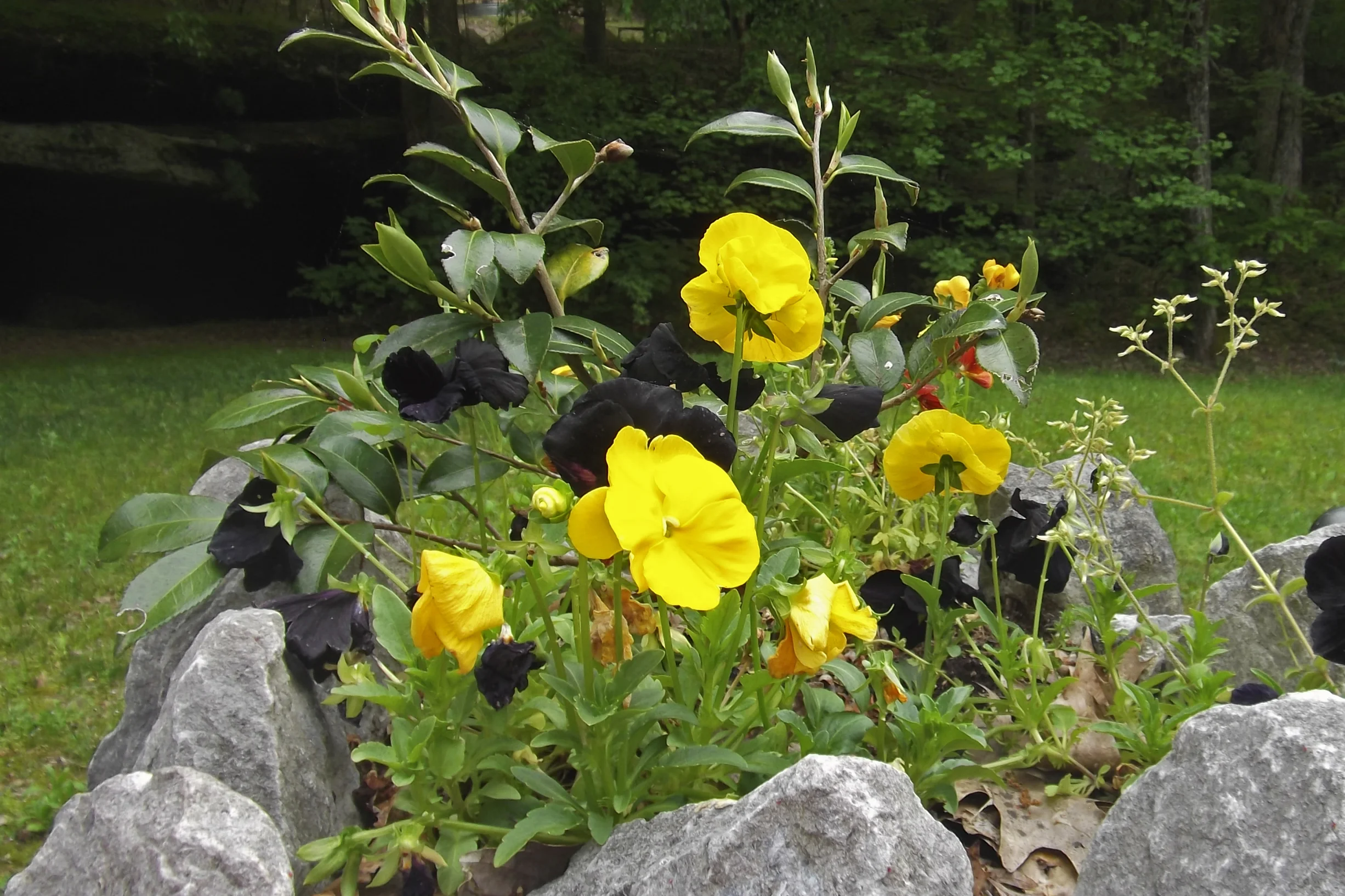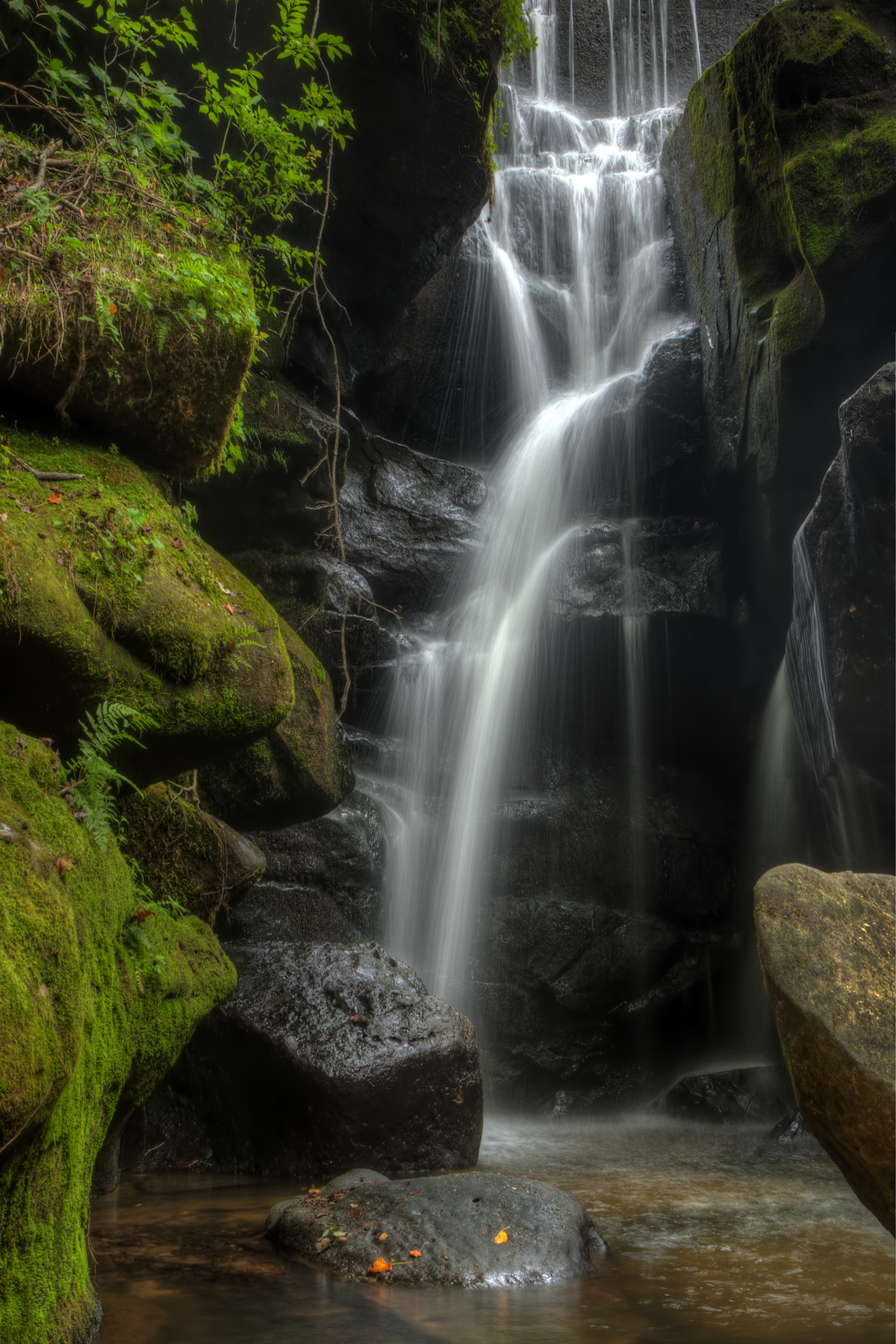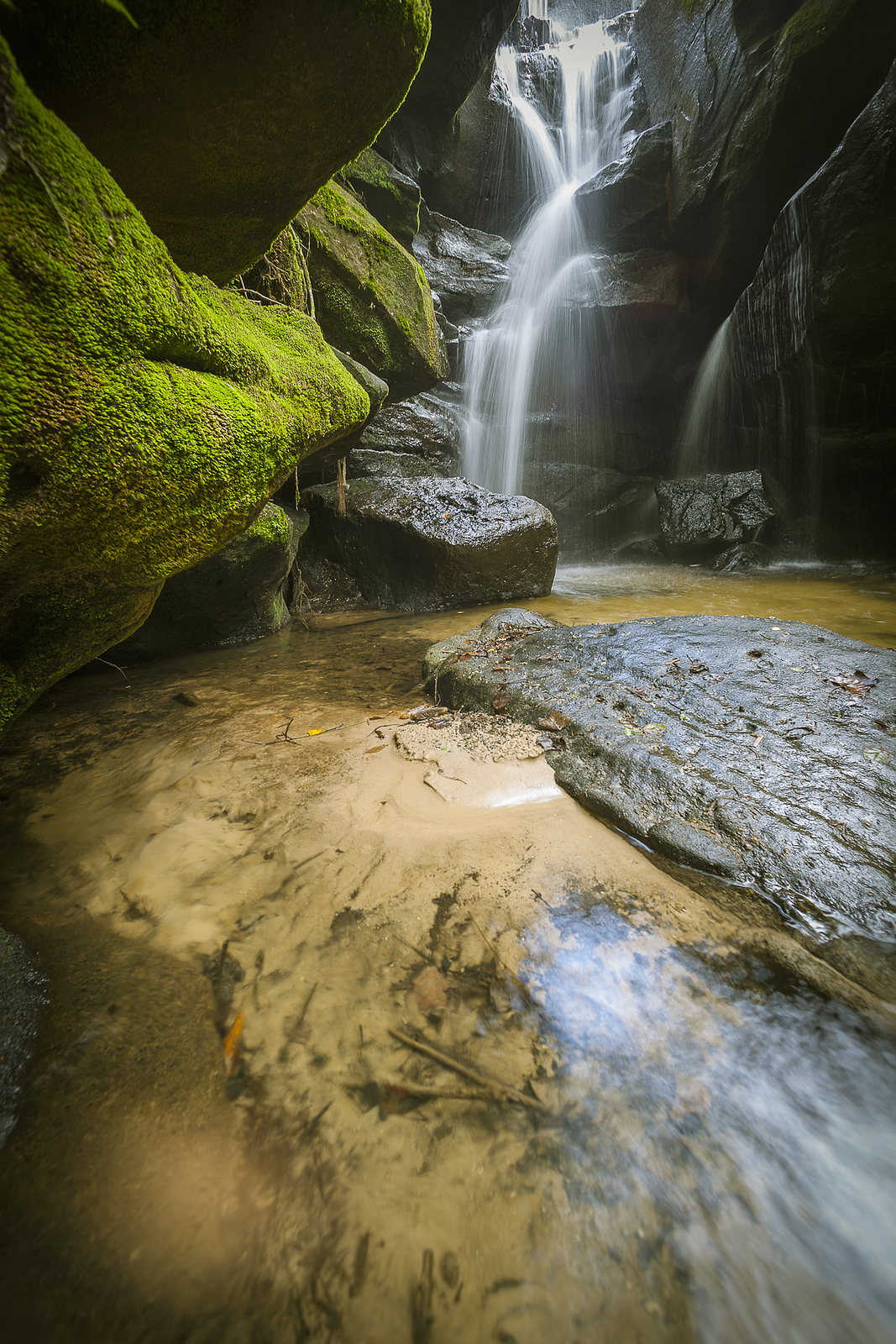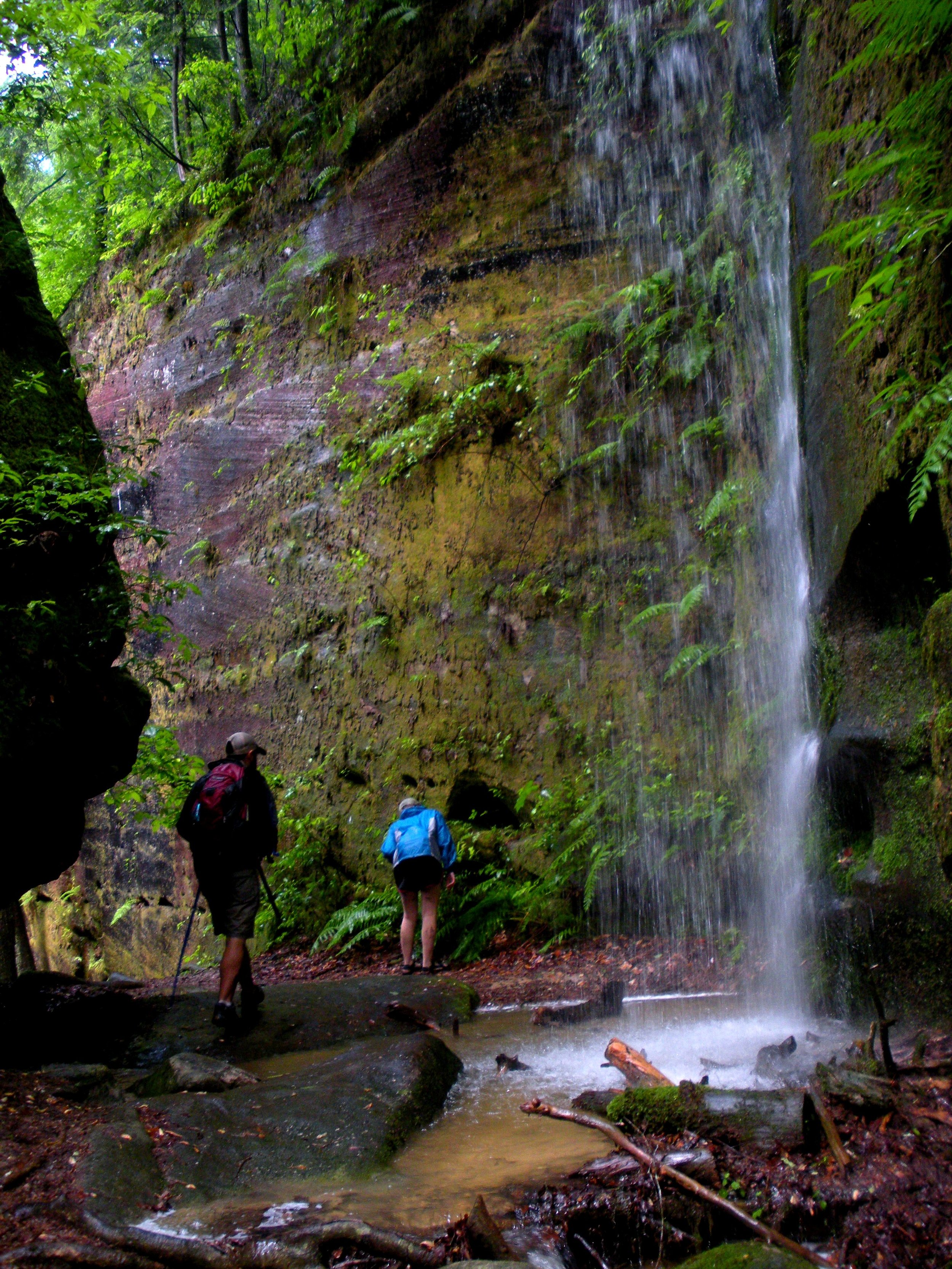ABOUT THE CANYON
photo by John Alford
Dismals Canyon was designated a "National Natural Landmark" in 1975 by the National Natural Landmarks Program. NNLs are administered by the National Park Service, U.S. Department of the Interior.
Deep in the canyon, on the canyon floor, is where you'll find the geological and biological splendor that makes Dismals Canyon worthy of the National Natural Landmark designation.
It contains a rich diversity of native plant life, including a stand of old-growth virgin timber composed chiefly of Hemlock, Tulip Poplar, Sweetgum, Bigleaf Magnolia, and Beech.
National Natural Landmarks Program
"Encourage and support the voluntary conservation of sites that illustrate the nation's geological and biological history, and to strengthen the public's appreciation of America's natural heritage."
Through the heart of the canyon flows "Dismals Branch", a winding stream that enters the canyon with a roar through "Rainbow Falls".
A 1.5 mile hiking trail on the canyon floor follows the stream through sky-reaching boulders, past thundering waterfalls, into a secret world of mossy-green and pearl gray filled with ferns and giant trees. Its waterfalls, natural bridges, cliffs and boulders give this place a magnificent splendor.
Explore the strange and beautiful labyrinth of caverns, grottos and small slot canyons formed by massive house-size boulders broken off the towering bluffs and strewn about by geological events going back to the Paleozoic era - 300 million years ago.
Among the shadows of this primeval sunken forest, you'll see the mysterious sanctuaries occupied by Paleo, Cherokee, and Chickasaw inhabitants.
BIOLOGICAL DIVERSITY
photo by Shannon Williams
Alabama ranks as the fourth most biologically diverse state in the nation. As a shimmering example, Dismals Canyon contains a rich diversity of native plant life, including a stand of old-growth virgin timber composed chiefly of Hemlock, Tulip Poplar, Sweetgum, Bigleaf Magnolia, and Beech.
More than 350 different species of Exotic Flora have been identified by botanists exploring the canyon.
The roots of trees clutch giant boulders instead of growing under ground. A clump of Trailing Arbutus grows out of solid rock instead of from leaf mold. Microhabitats of Moss and ferns cover boulders like thick blankets. And giant Canadian Hemlocks rise into the air.
photo by Jimmy Emerson
Until an ice storm destroyed one of them, twin Canadian Hemlocks (Tsuga canadensis) towered up from the canyon floor. One of them remains and looks sturdy and healthy for its 370 years. It is 138’ tall, 8’9" around and has a crown spread of 50’. It is the largest of its species in Alabama and thought to be one of the largest anywhere in the world.
These Hemlocks are in an isolated spot hundreds of miles distant from their normal range of growth. It is believed the twins are sole remnants of arboreal flora pushed south during the age of glaciers.
The area around "Secret Falls" is a natural arboretum. Within 100 feet grow 27 species of native trees. In fact, the official state tree of 30 states can be found on the canyon floor.
"Witches Cavern" - just below "Rainbow Falls" - is a strange and beautiful labyrinth of moss and fern covered boulders where the largest colony of Dismalites resides.
Visitors to the canyon are always amazed to find such uniquely wild beauty in Alabama.
In Film
Dismals Canyon was used to film a segment for the Discovery Channel documentary When Dinosaurs Roamed America. That segment was set in Late Cretaceous New Mexico
Rare Hellbender
photo by Sean Graham
In 2006 a Hellbender (giant Salamander) was found at Dismals Canyon. It is currently the most recently encountered hellbender in Alabama, and one of only three specimens that have been found in the state in the past twenty years. It's about 2 feet in length.
The organization Alabama Partners in Amphibian and Reptile Conservation (www.alaparc.org) has initiated a conservation effort (Alabama Hellbender Initiative) to assess the status of hellbenders in Alabama.
HUMAN HISTORY
Dance Hall - photo by Jason Williams
Located in northwest Alabama, Dismals Canyon was originally occupied nearly 10,000 years ago by Paleoamericans.
From artifacts found scattered among bluff shelters, grottos, and other sanctuaries, we've learned that many cultures of Stone-Age humans were at Dismals Canyon.
Temple Cave - photo by Ronnie Harris
"Temple Cave" - a bluff shelter on the canyon floor - was home to Paleoamericans about 10,000 years ago. This shelter has never been excavated but samples of Paleo spear points have been found in different areas of the Canyon. Paleoamericans were the first humans known to inhabit this part of North America.
It has also been home to Chickasaw and Cherokee.
In 1838 U.S. Troops rounded up the Chickasaw Native Americans - forcing them from their ancestral lands - and held them under guard in this Canyon for two weeks before herding them like cattle to Muscle Shoals where they embarked on the Trail of Tears.
old mill stone
Besides a lazy little pool at the top of "Rainbow Falls", early settlers built a water mill, cotton gin, and sawmill. The mill and water wheel were destroyed by a flood sometime in the 1950s, but one of the mill stones is still below Rainbow Falls - where it landed after the flood.
On Sunday afternoons church congregations would escort their new converts to the chilly waters for old-time open-air baptizing.
The early settlers who first named this hidden canyon a century ago were largely of Scotch-lrish descent. Some believe they brought the name from that beautiful and rugged spot in Scotland called "Dismals".
GEOLOGICAL HISTORY
photo by Ronnie Harris
Dismals Canyon was designated a "National Natural Landmark" because of it's uncommon wild rugged character - largely the result of its geological history.
Once a primeval swamp, this area was lifted upward during the geological events of the late Paleozoic era (roughly 300 million years ago). Over time, the force of draining waters helped to carve a canyon and gorge system punctuated throughout by dozens of sandstone-sheltered grottos, two waterfalls, six natural bridges, and giant moss covered boulders strewn about by ancient earthquakes.
Huge blocks of sandstone have broken away from the gorge walls and lie in haphazard fashion on the floor, producing many natural bridges and damp rock-face microhabitats.
This natural wonder contains one of the oldest primeval forests east of the Mississippi River untouched by ax or fire that is open to the public.
Frame from Scott Neverdusky video
photo by Ronnie Harris
National Natural Landmarks Program In-Depth
CANYON FLOOR POINTS OF INTEREST
Dismalites
Past twilight the canyon lights up with tiny creatures we call Dismalites. Guided night tours are available throughout most of the year.
Rainbow Falls
These falls were the source of power for a great mill and water wheel that was destroyed by a flood sometime in the 1950s.
Grotto
Geological events going back millions of years arranged these house-size boulders together to form natural bridges and a cool green grotto.
Pulpit Rock
A winding natural rock stairway. At the top is Pulpit Rock from which you have a panoramic view of part of the canyon.
Kitchen
This covered area was used for cooking and tribal rituals by Chickasaw Indians.
Temple Cave
About 10,000 years ago this bluff shelter was home to a tribe of Paleo Indians - first man known to inhabit this part of the U.S. This shelter has never been excavated but samples of Paleo pottery & arrow points have been found in different areas of the Canyon. The large rock was used for grinding corn.
Champion Tree
This Eastern/Canadian Hemlock is the first Champion Tree in Franklin County. There were two Champion Trees until an ice storm destroyed one of them. The tree is 138’ tall, 8’9” around and has a crown spread of 50’. It is the largest of its species in Alabama and thought to be the largest anywhere in the world.
Weeping Bluff
Looking up at the bluff, you can see the face of an Indian Maiden. The water that seeps from this bluff is said to be tears shed by the Canyon for the loss of its only true friends-the Chickasaw Indians. But it's really just water trickling through from the land above.
Secret Falls
The water creating these falls flows from an underground mountain stream that opens onto the earth's surface about 3/4 of a mile upstream. The area around "Secret Falls" is a natural arboretum. Within 100 feet grow 27 species of native trees.
Dance Hall
This well camouflaged area-protected from the sun and the elements-was used by the Chickasaw Indians for shelter. It is the only place where the rock has been worn smooth by centuries of human use.
Fat Man's Misery
This narrow opening (16” wide) between the two big boulders was the original entrance to the Canyon floor.
Witches Cavern
A strange and beautiful labyrinth of moss and fern covered boulders where the largest colony of Dismalites resides.
PLANNING A VISIT?
Dogs:
If you bring your dog, we ask that you keep it on a leash.
What to Bring:
If you plan on taking the Dismalite Night Tour, you will want to bring a flashlight (preferably one with a red filter). Read more about about red light and night vision on the Dismalites page.
Remember to take plenty of water - or a water filter - with you on the trail. If you do not bring your own, we sell water and other beverages in the Country Store.
If you camp, it's a good idea to bring a NOAA Weather Radio. (NWR) is a nationwide network of radio stations broadcasting continuous weather information directly from the nearest National Weather Service office. NWR broadcasts official Weather Service warnings, watches, forecasts and other hazard information 24 hours a day, 7 days a week.
Proper Apparel for the trail:
The Hiking/Nature trail through the canyon is not your average stroll in the park. It is a Natural Terrain Trail with limited bridges & many fallen trees! In some places, you have to cross ankle deep water and - depending on recent weather - the trail may be muddy and slippery.
We suggest wearing shoes that you won't mind getting wet or soiled. The same goes for other apparel.
PLEASE BE CAREFUL while hiking the canyon floor:
It is easy to trip or fall. There are many large roots and rocks, and in many spots it can be very slippery.
Handicap Accessibility:
The canyon floor IS NOT wheelchair accessible. There are stairs to traverse in order to get down onto the canyon floor, and the trail is on very uneven terrain.
Fees and Admission:
Dismals Canyon is not a state or federal park. It is a natural conservatory privately owned and operated. There are admission fees.
Wild Animals:
Although not many animals are usually seen in the canyon, it is possible to see snakes or other wild animals. Do not attempt to kill or harm any animal you may encounter. And please note: we do not refund admission fees because you were frightened by an animal. This is nature.
Leave nothing, take nothing
Dismals Canyon is a National Natural Landmark Registered with the U.S. Department of the Interior. $1,000 fine for removal or defacement of rocks, plants or animals.
FREQUENTLY ASKED QUESTIONS
Q. I have a National Parks Pass. Is it good for admission into Dismals Canyon?
A. NO. Although Dismals Canyon is designated by the National Park Service as a NATIONAL NATURAL LANDMARK, it is not a State Park or National Park. It's an 85 acre Natural Conservatory - privately owned and operated. There are admission fees.
Q. Do you offer RV camping / hookups?
A. NO. We do not offer RV camping.
The closest RV camping is at Bear Creek Lakes, not far from Dismals Canyon.
Q. When are you open? What is your seasonal schedule?
A. See our Operating Schedule page.
Q. What are your latitude and longitude coordinates?
A.
34° 19' 38.00" N
87° 46' 57.00" W
Q. Are dogs allowed?
A. YES. But we ask that you keep them on a leash.
Q. How many miles of hiking trails do you have?
A. A 1.5 mile hiking trail on the Canyon Floor.
Q. Do you have horse or bike trails?
A. NO. BUT that may change soon.
Q. Do you have bathhouse / restroom facilities for campers and visitors.
A. YES. the Bathhouse / Restrooms are located in the parking area. See Rim Map on Maps page.
















